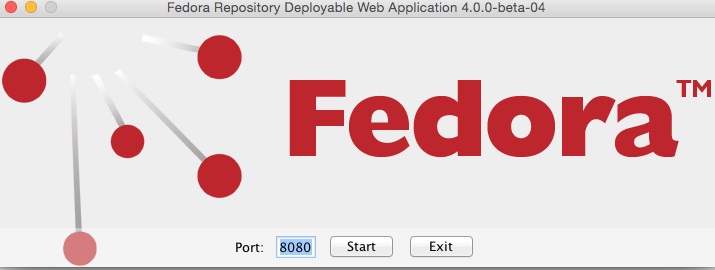This document is a guide to getting up and running with Fedora as quickly as possible.
Out of the box
If you are looking for scripted deployments, please take a look at Fedora's deployment tooling.
System Requirements
Installation
There are two primary ways of deploying Fedora 4. The first, One-Click Run, is an easy way to get Fedora 4 running to test out the basic features. The second, Servlet Container Install, is the approach to be used in production installations.
One-Click Run
- Download the latest executable webapp "one-click-run" from downloads
Either double-click on the download, or run the following command to start Fedora 4
java -jar fcrepo-webapp-<version>-jetty-console.jar
Once Fedora 4 is seen to be running at the following URL, start exploring the feature tour
http://localhost:8080/rest/
Note, port 8080 is the default. Replace that port number in the above URL if you used a different value.
Servlet Containers
Alternatively, instead of deploying Fedora 4 via the "one-click run", the Fedora 4 web-application can be installed by dropping the WAR file into a servlet 3 container, such as Tomcat 7 or Jetty 8.
For details on installing Fedora 4 to those containers, see the Deploying Fedora 4 Complete Guide guide.
Next Steps
Once Fedora 4 is running,
- Explore the feature tour
- Explore the web-application configuration options
- Explore enabling repository asset authorization
- Explore setting up an external search index

1 Comment
Jennifer Lindner
This might be better re-named as Getting Started or Up and Running. It should be separated into the Installation page and then Feature Tour could be re-named Quick Start, because it's what you want - to explore what you can do.